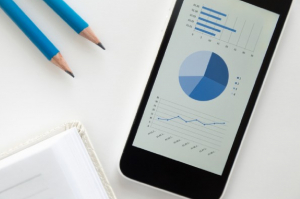Analytics has made banking more personal. With the use of big data derived from customer accounts, credit information, financial records, and also other social transactions, it has empowered banks to foresee upcoming financial needs of the customer, and offer value-based prospects and several upgrades, benefits, credit offers to help out with their economic planning. This has not only helped banks find better businesses but also customers to connect for the right services without beating around the bush.
Predictive analytics has proven to be highly effective against detecting and predicting fraudulent activities too. As such, here are 5 ways identified by CRIF – one of the 4 RBI approved credit information companies in India, predictive analytics is prominently helping the banking industry.
Addressing the exact needs of the customer – no playing around!
We live in a deeply commercial age where the buying patterns of customers are highly diverse considering the vast number of options they have. Analytics is a highly-effective profile building method that takes into account the buying behavior, investment interests, and spending habits of the customer. These parameters greatly help in determining the exact needs of the customer and in return, presenting them with the right products and policies.
Analytics can help banks classify customers according to their economic paradigms, which makes a great deal of difference in determining their exact needs and challenges. Advanced or predictive analysis even goes a step further by determining what the customer will need next or what they are not interested in.
Early detection of frauds
With banking businesses shifting online in the digital boom, physical fraudulent activities have transformed into cyber frauds. Since analytics deals with data, it has enough information to actually foresee such frauds based on the patterns and investment behavior of customers. Customers having credit accounts, mutual funds, or ongoing loans have a particular usage pattern that can be studied by analytics and it can determine if any irregular behavior is an indicator of fraud. With the emergence of big data, most banks rely upon monitoring systems that are operated by human experts.
Finding reliable ways to retain customers
For a business to positively expand its customer base, the simplistic formula is to acquire new customers while also retaining existing customers. In today’s cutthroat commercial market, customer retention is the trickiest part, mainly because several people are simultaneously working with more than one bank. Hence, it becomes difficult to stop the customer from leaving your services. This is where analytics can make a difference – it helps banks identify high-value customers, understand their particular needs, pitch them the right services, and expend their best resources on retaining them. This helps free resources from other low-value customers and invest their attention to finding new customers.
Opens new marketing prospects
Using analytics, banks can design products to optimize sales and minimize attrition. Analytics plays a huge role in minimizing risks associated with a product, as it can predict application limitations beforehand and also by identifying non-performing assets.
Minimizes risks
With so much data at its disposal, predictive analytics can certainly draw a clearer bigger picture and greatly help in minimizing risks – be it financial, marketing, or even internal. More importantly, it can be used to detect the root of past mistakes or bad fiscal phases, and to determine ways to fix loopholes. The key is to plan along the lines of the risk, be it with the help of predictive modeling, or even individual case studies.
Predictive Analytics in banking has a lot to do with business intelligence converting data into usable knowledge. In banking, especially with predictive analytics and big data, it has become a lot easier to figure out the opportunities which would fetch the highest response rates among customers. Contact CRIF – the leading microfinance credit bureau in India, for predictive analytics solutions.

